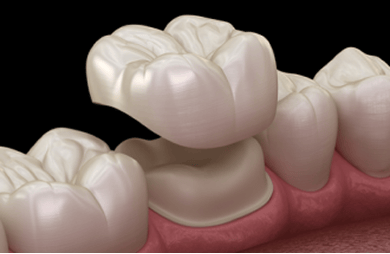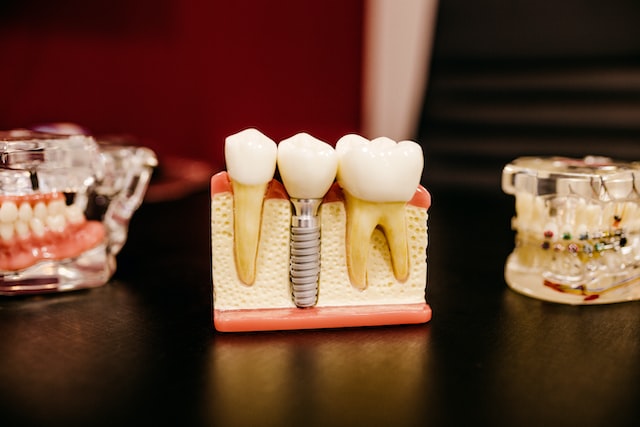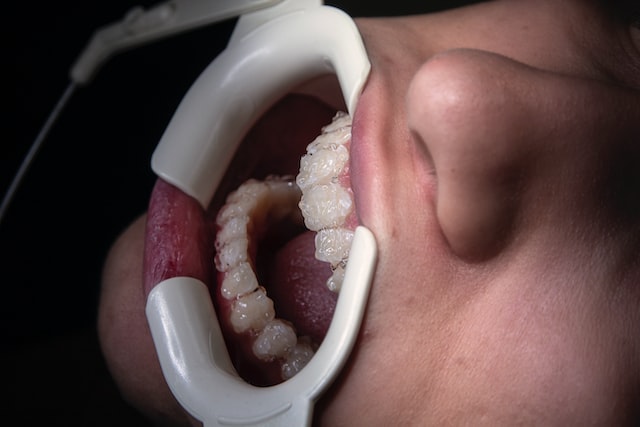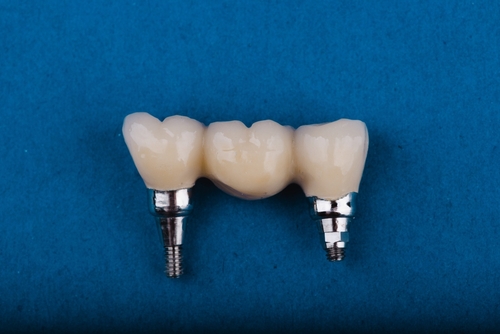Dental crowns are a common form of treatment used after a root canal procedure. Many people are unaware of the reasons why a dental crown is necessary after a root canal, so this article will provide an overview of why a crown is used and the benefits of having one placed.
What is a Dental Crown?
A dental crown is a cap shaped like your tooth and usually placed over a damaged or decayed tooth. It is designed to restore a damaged tooth's shape, size, strength, and appearance. The crown encases the entire visible tooth's portion lying at and above the gum line. Crowns are made from porcelain, composite resin, metal alloys, and ceramics.

How Long Does a Root Canal Last Without a Crown?
Depending on the material used and the situation, a crown can last anywhere from five to fifteen years. They are generally used to protect a weak tooth from breaking, to restore a broken tooth, to cover a discoloured or misshapen tooth, to support a large filling when there is not enough tooth remaining, and to cover a dental implant.
What Does a Root Canal Treatment Do To Your Teeth?
A root canal treatment is designed to repair your damaged or infected tooth. The process involves the removal of the damaged or infected pulp from within the tooth, cleaning the inside of the tooth, and then filling and sealing the tooth. The role of the root canal is to prevent further damage and infection to the tooth and to save it from extraction.
A root canal treatment's first step is removing the damaged or infected pulp. This is done by opening the top of the tooth and carefully removing the pulp using special instruments. Once the pulp is removed, the inside of the tooth is cleaned, and any remaining bacteria is removed. Once the inside of the tooth is cleaned, a particular material is placed to protect the inside of the tooth. Finally, the tooth is sealed with a dental filling or crown to protect it from further damage or infection.
Root canal treatment can help to save a tooth that is severely damaged or infected and can help to restore the health and strength of the tooth. Maintaining regular dental check-ups and cleanings is essential to ensure that the teeth are in good health and prevent further damage or infection.
Emergency Case Study: Cracked Tooth After Root Canal Treatment
A new patient referred by a loyal existing client, was seen by a dentist for an after-hours appointment due to complaining of toothache on the upper left side of her mouth. Upon examination, it was discovered that her upper left 2nd premolar tooth had cracked after receiving a root canal treatment.
The dentist used the STA Wand machine to administer an anaesthetic, allowing the loose tooth fragment to be easily extracted. Once the chip was removed, a temporary filling was placed to stabilise the tooth, leaving the patient feeling comfortable and pain-free.
The Consequences of Not Having Had a Crown Placed Over the Tooth
Mulgrave Dental Group now offers One Visit Crowns, a treatment performed in one appointment, cheaper than traditional dental crowns. This treatment is essential for those who have had a root canal treatment, as it helps to safeguard the tooth from further damage and can save you from costly procedures in the long run.
In the case of the patient described in the above study, the tooth had cracked 3-4 mm below the gum line, making it extremely difficult to restore the tooth successfully. The best treatment option for this patient was to remove the remaining tooth and replace it with a single-tooth implant.
However, if she had a crown on the root canal tooth, this would have been avoided, and the cost of a dental crown would have been far less than that of a single tooth implant. Therefore, having a crown placed over the tooth is the best way to preserve oral health and save money in the long run.

Advantages of the One Visit Crown
Do you need a crown after the root canal? One-visit crowns offer many advantages over traditional dental crowns. The biggest advantage is the reduced treatment time. With one-visit crowns, the entire process only takes around one hour, compared to multiple visits for traditional crowns. Additionally, one-visit crowns are up to 50% cheaper than laboratory-made dental crowns.
Another great advantage of one-visit crowns is that they are less invasive than a full crown. This means that more of the tooth structure is conserved, making them a more conservative option. Lastly, one-visit crowns look and feel like a natural tooth, blending in seamlessly with the rest of your teeth.
Final Words
Dental crowns are a vital part of the root canal treatment process. They provide the necessary protection for the tooth, allowing it to last many years. Dental crowns also help to restore the tooth’s strength and appearance, allowing the patient to maintain a healthy, beautiful smile. Therefore, if you require a root canal treatment, knowing the importance of a dental crown in the process is essential.
If you’ve recently undergone a root canal treatment or are experiencing any discomfort with a previously treated tooth, get in touch with a dentist. At Mulgrave Dental Group, our expert oral team ensures your tooth remains strong and secure for years to come. Book a dental appointment today.
Smile Makeover Client
Your Healthier Smile Awaits
Whether you're looking to improve your dental health or enhance your smile, we're here to help. Book an appointment with Mulgrave Dental Group today!
Book Now


